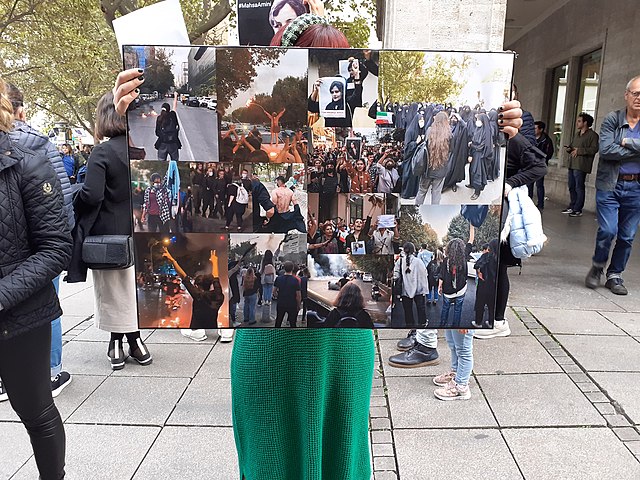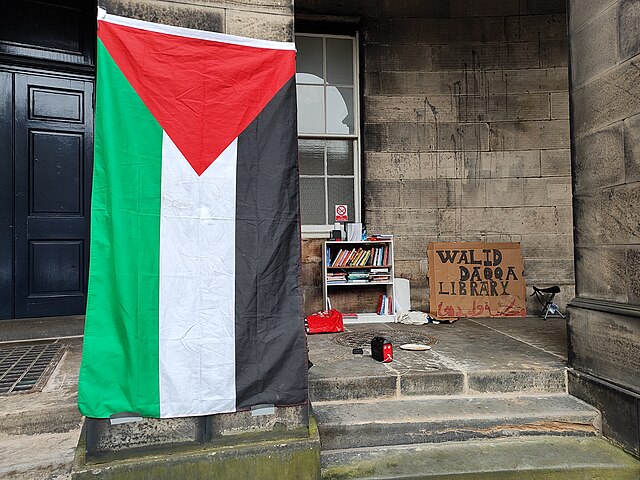Protests have erupted in Iran and are spreading across the nation after Mahsa Amini was arrested on Sept. 13 in Tehran for wearing “unsuitable attire.” Amini died in police detention on Sept. 16, and her unjust death has prompted many to protest against authorities and the government.
Officials deny having to do with Amini’s death and insist she died of sudden heart failure. The family has denied Amini having any previous health issues. There have also been reports that indicate her death was caused by a skull fracture, according to the Associated Press.
Amini was arrested by the “morality police,” an authoritative force tasked with detaining people, mainly women, who violate Iran’s conservative dress code in order to “promote virtue and prevent vice.”
After Amini’s funeral on Sept. 17, thousands of protestors took to the streets of multiple cities including Tehran, Ilam, Isfahan, Mahabad, Saqez, Sari and Tabriz. Protestors are demanding justice for Amini and an end to violence, discrimination and inequality for women in Iran.
This kind of reckoning for Iran is long overdue; the country has a slew of laws and procedures that specifically discriminate against women, effectively making them second-class citizens.
According to Amnesty International, an organization dedicated to helping people worldwide seek liberation from severe abuse, the government has “forced covering” laws, which are procedures that police women and girls’ clothing in public. Through these highly misogynistic laws, women and girls are legally bound to cover themselves from head to toe or face harsh repercussions from law enforcement.
“The ‘morality’ police,” Amnesty International wrote, “place the entire female population-40 million women and girls-under surveillance. These state agents drive around the city and have the power to stop women and examine their dress, scrupulously assessing how many strands of hair they are showing, the length of their trousers and overcoats, and the amount of make-up they are wearing.”
As a result of state-sanctioned discrimination against females, members of the general public – particularly men – may feel obliged to take the policing of women and girls into their own hands. Extremely offensive language, physical attacks, pepper spray and demands that women fully cover their hair with headscarves are all forms of abuse that are part of the everyday reality for women and girls in Iran.
While the protests taking place right now began due to the unjust death of Amini and “forced covering” laws, the dismissal of women’s rights in Iran extends even further than simply laws governing their very bodies. Laws pertaining to child marriage, domestic violence and gender discrimination all fail miserably at providing any sort of legal protection for women.
According to the Office of the High Commission, an office within the United Nations, girls as young as 13 years old can marry, and “girls even younger can legally marry with judicial and paternal consent.” Iranwire, a news outlet, reported that in the last eight years, more than a million female child marriages have been registered in Iran, 13,500 of which included children 13 or younger.
It is estimated that an average of 400-500 “honor killings” of women happen every year in Iran. It is legal for a man to deem any woman dishonorable and murder her. According to the Iran Human Rights group, an organization dedicated to upholding the rights of Iranians, 32% of urban women and 63% of rural women experience domestic violence, including these honor killings, and yet legal punishment for these crimes is virtually nonexistent.
According to IHR, legal gender discrimination is highly prevalent in Iranian law. Iranian women receive unequal treatment during divorce, and forfeit “financial maintenance” if they attempt to leave their “marital home.” Furthermore, Iranian women can be forbidden from finding employment by their husband, and they cannot leave Iran without their husband’s permission.
Discriminatory laws such as these are made to explicitly curtail the rights and freedoms of women by crippling their ability to provide for themselves financially, essentially tying their survival to their marital status, no matter dangerous staying in their marriages can be and how abusive their husbands are.
The protests have largely been nonviolent. Iranian women burnt their hijabs and cut off their hair to express their discontent against the government.
In retribution for these protests, on Sept. 19, the Iranian government blocked access to the internet and restricted the public’s access to information about the protests and the Mahsa Amini case.
Riot police have also been carrying batons, tear gas, guns and metal pellets to combat anyone conducting inappropriate behavior while protesting. The death toll differs between the Iran State Media and the Iran Human Rights group – the number of dead could be anywhere from forty-one to ninety-two.
In addition to the death toll, at least 700 people have been arrested while protesting, twenty of these people being journalists.
The U.S. government sanctioned Iran’s morality police on Sept. 29 and the Treasury Department’s Office of Foreign Assets Control has also taken steps to deny Iranian Ministry of Intelligence leaders and other organizations access to their properties and bank accounts held in the U.S.
The abuse of women’s rights in the country, along with the militant response from the government and police toward protesters, rightfully conjure grim sentiment toward the Iranian regime. Even as the world progresses, women continue to suffer and die under patriarchal systems that discriminate against them simply due to their gender.
However, hope is not all lost.
The response to the murder of Amini has produced an inspiring number of concurrent protests worldwide, as people in multiple major cities take to the streets to call for justice for Amini and an end to the archaic treatment of women in Iran, and across the world as a whole.
According to The Guardian, protesters in places such as New York, Rome, Paris and Seoul have adopted the slogan “Women, life, liberty.”
Ultimately, Mahsa Amini died as a martyr. Let’s hope her death was not in vain, and that change will eventually come to Iran.
















